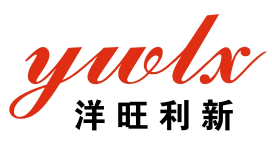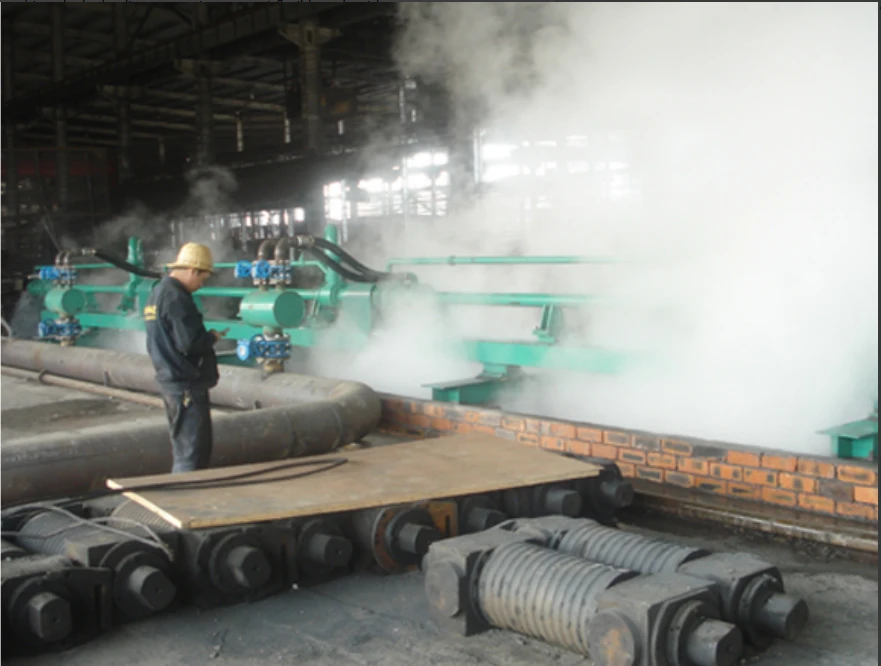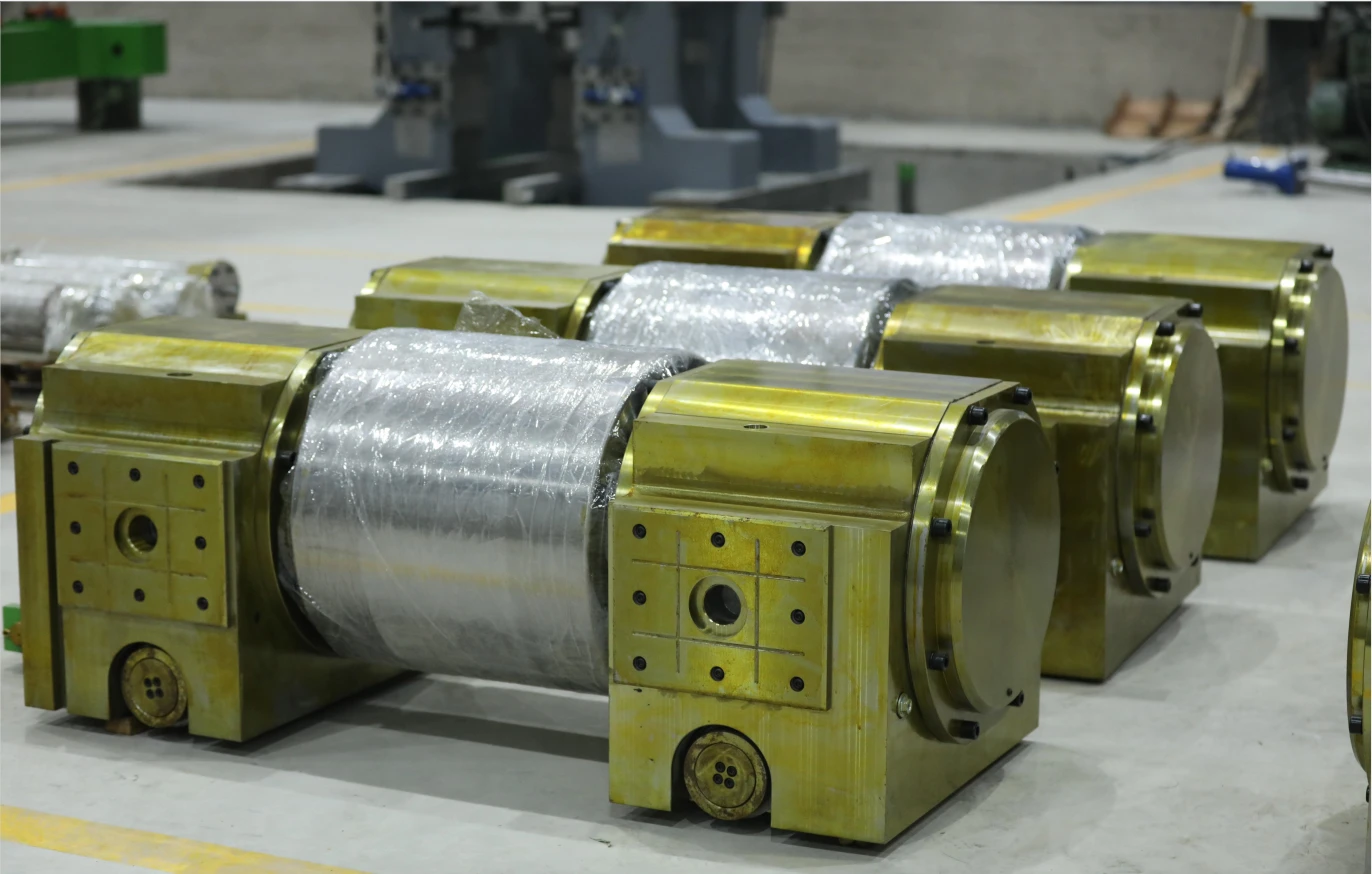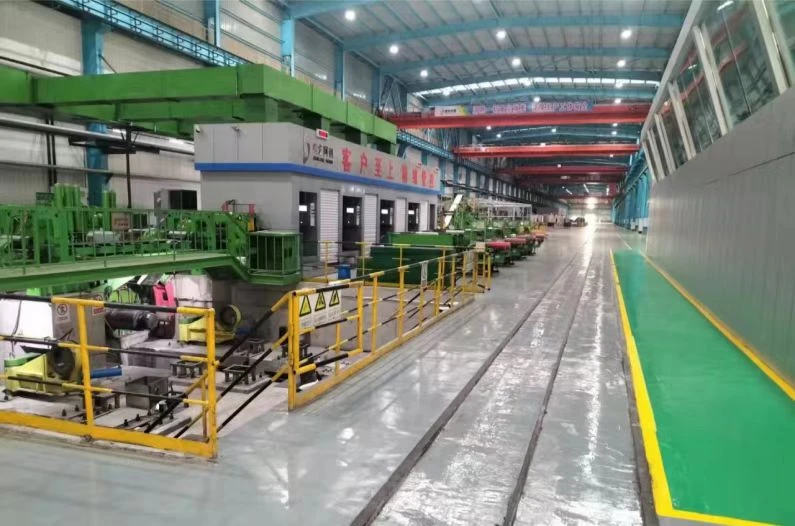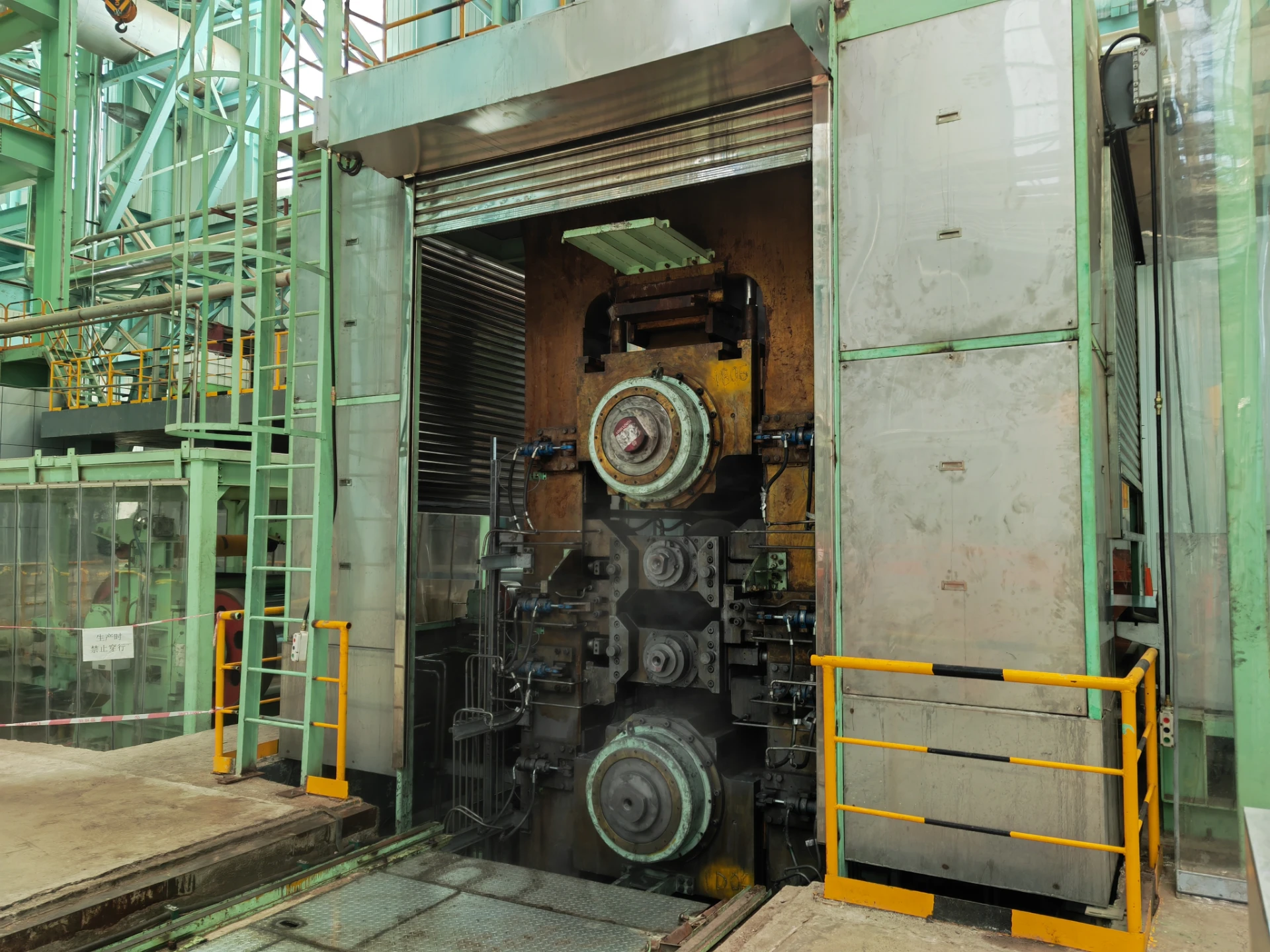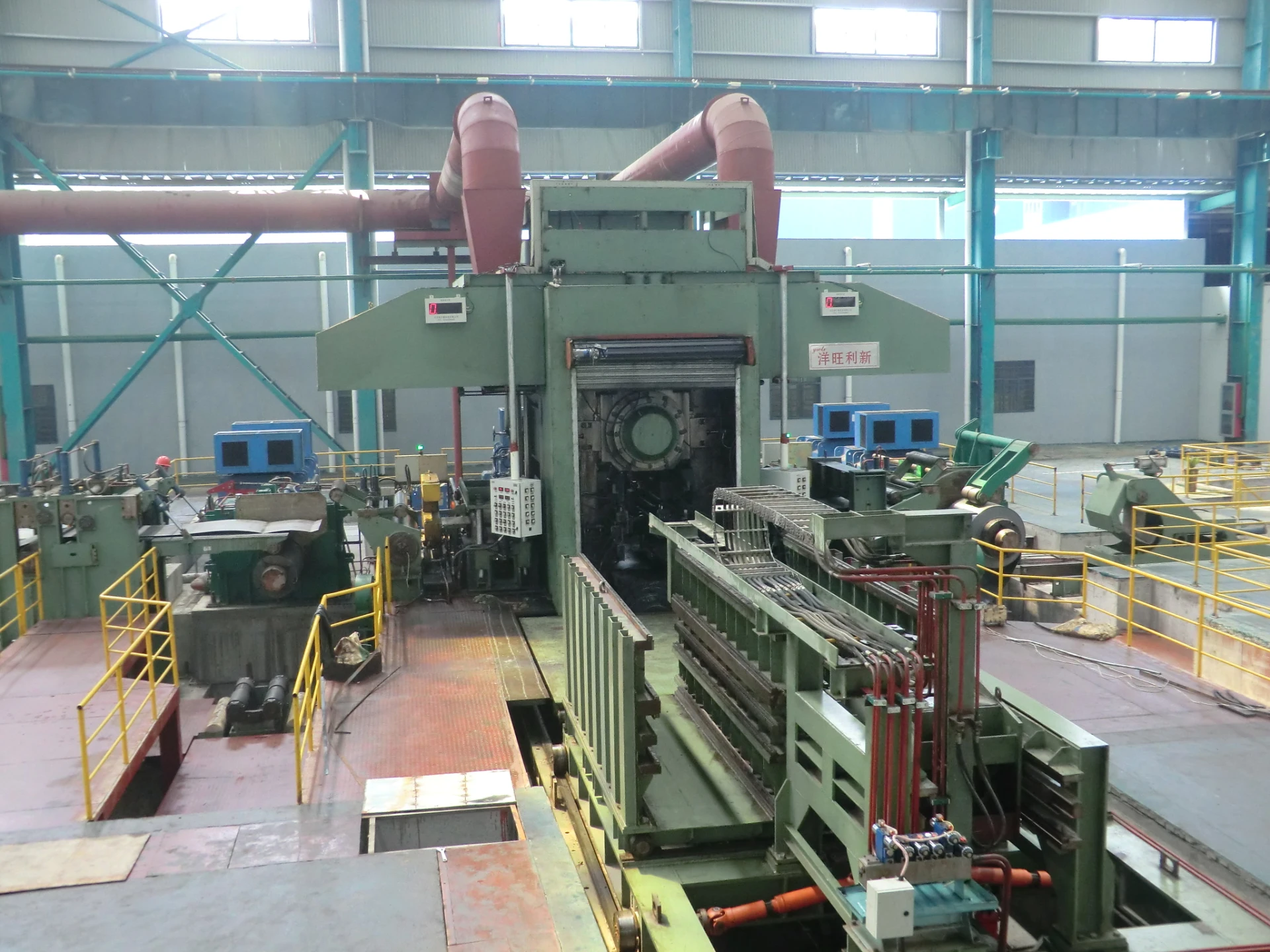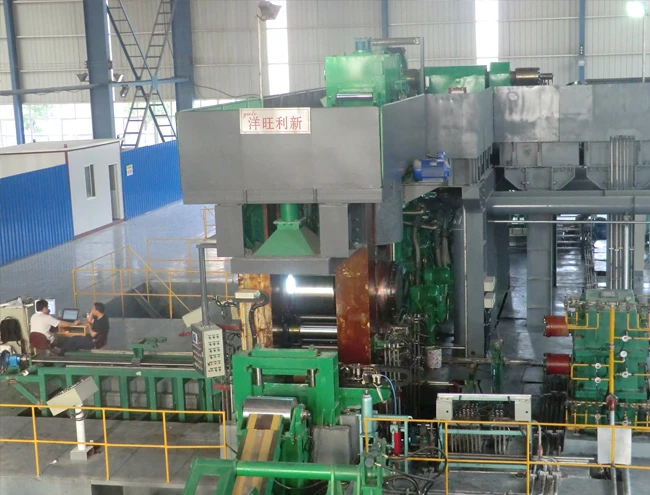
High-Efficiency Water Cooling System for Water Tanks
In the vast landscape of industrial operations, maintaining optimal temperatures for critical equipment and processes is paramount. The integrity, efficiency, and longevity of machinery heavily depend on effective thermal management. Among the most crucial solutions for this challenge is the water cooling system for water tank, a sophisticated infrastructure designed to regulate temperatures by circulating cool water, often in conjunction with a cooling water expansion tank and a cooling water storage tank. This comprehensive guide delves deep into the nuances of these systems, exploring their technological advancements, diverse applications, and the specialized services that ensure their peak performance.
The Evolving Landscape of Industrial Water Cooling Systems
The industrial sector is undergoing a profound transformation, driven by demands for greater efficiency, sustainability, and reliability. This paradigm shift significantly impacts the design and implementation of industrial cooling solutions. The global industrial cooling market is projected to grow substantially, with a compound annual growth rate (CAGR) indicating a strong upward trajectory, fueled by expanding manufacturing capabilities, particularly in emerging economies, and the increasing adoption of data centers that require extensive cooling infrastructure. For instance, market research consistently points to the industrial refrigeration and cooling market reaching tens of billions of dollars by the mid-2020s, highlighting the critical role of robust cooling solutions.
Key trends shaping the future of industrial cooling include:
- Energy Efficiency: A relentless focus on reducing operational costs and carbon footprints drives innovation in pump design, heat exchanger technology, and intelligent control systems. Solutions that promise significant energy savings, often measured in kilowatt-hours per ton of cooling (kW/ton), are highly sought after.
- Smart Cooling Systems (IIoT Integration): The integration of Industrial Internet of Things (IIoT) sensors, predictive analytics, and AI-driven control algorithms allows for real-time monitoring, optimized performance, and proactive maintenance, minimizing downtime and maximizing efficiency.
- Sustainability and Water Conservation: With increasing environmental regulations, systems that minimize water consumption, utilize closed-loop designs, or incorporate advanced water treatment technologies are becoming standard. This includes optimizing blowdown rates and exploring alternative cooling mediums.
- Modularity and Customization: Industrial operations often have unique cooling requirements. The trend is towards modular systems that can be easily scaled or customized to fit specific capacities, footprints, and environmental conditions.
- Advanced Materials: Development and use of more corrosion-resistant, high-strength materials for components like heat exchangers, pipes, and tanks enhance system longevity and performance in aggressive environments.
These trends underscore the importance of a well-engineered water cooling system for water tank that not only meets current operational needs but is also adaptable to future industrial demands.
Technical Parameters and Components of a Robust Water Cooling System
A typical water cooling system for water tank is a complex interplay of several interconnected components, each designed to perform a specific function in the heat transfer process. Understanding these components and their critical parameters is essential for system design, operation, and maintenance.
Core Components:
- Heat Exchanger: The heart of the system, where heat is transferred from the process fluid to the cooling water. Types include shell and tube, plate, and finned coil heat exchangers. Their efficiency is defined by the overall heat transfer coefficient (U-value) and approach temperature.
- Circulation Pumps: Responsible for moving cooling water throughout the system. Key parameters include flow rate (GPM or m³/h), head pressure (feet or meters), and power consumption (kW). Pump selection is critical for maintaining adequate flow and pressure.
- Cooling Tower/Chiller: For dissipating heat from the cooling water to the atmosphere. Cooling towers use evaporative cooling, while chillers use refrigeration cycles to cool the water to a desired temperature. Capacity is often measured in tons of refrigeration (TR) or kW.
- Water Tank (e.g., Cooling Water Storage Tank): Provides a buffer volume for the cooling water, managing system fluctuations and ensuring a stable supply. These tanks are often insulated and may include internal baffling to promote even cooling.
- Expansion Tank (e.g., Cooling Water Expansion Tank): Accommodates the volumetric changes in water due to temperature fluctuations, preventing excessive pressure buildup in closed-loop systems. Sizing is crucial for system integrity.
- Filtration System: Removes suspended solids and contaminants from the cooling water, protecting pumps, heat exchangers, and other components from fouling and abrasion.
- Water Treatment System: Prevents scale formation, corrosion, and biological growth (algae, bacteria) within the system, crucial for maintaining heat transfer efficiency and component longevity.
- Control System: Monitors and regulates system parameters (temperature, pressure, flow rates) using sensors, programmable logic controllers (PLCs), and human-machine interfaces (HMIs) for automated operation and fault detection.
Key Parameters for water cooling system for water tank Selection:
Selecting the right water cooling system for water tank requires careful consideration of various technical parameters. These include:
- Heat Load (BTU/hr or kW): The total amount of heat that needs to be removed from the process. This is the primary determinant of system size.
- Inlet/Outlet Water Temperature (°C or °F): The desired temperature range of the cooling water entering and leaving the process. Precision in temperature control is often a critical requirement.
- Flow Rate (GPM or m³/h): The volume of water required to carry away the heat load within the specified temperature differential.
- Pressure Drop (psi or kPa): The resistance to flow within the system, which affects pump sizing and energy consumption.
- Environmental Conditions: Ambient temperature, humidity, and water quality influence the performance of cooling towers and overall system design.
- Material Compatibility: The materials of construction for all wetted parts must be compatible with the cooling water chemistry and any process contaminants.
Typical Parameters for Industrial Water Cooling Systems
To provide a clearer understanding, here's a table summarizing common parameters found in industrial water cooling system for water tank applications:
| Parameter | Typical Range/Value | Unit | Relevance |
|---|---|---|---|
| Cooling Capacity | 10 - 5000+ | TR (Tons of Refrigeration) | Total heat rejection capability |
| Water Flow Rate | 50 - 25,000+ | GPM (Gallons Per Minute) | Volume of water circulated per unit time |
| Inlet Water Temp (Process) | 25 - 90 | °C | Temperature of water entering process |
| Outlet Water Temp (Process) | 20 - 85 | °C | Desired temperature of water leaving process |
| System Pressure | 20 - 150 | psi | Operating pressure range |
| Materials of Construction | Carbon Steel, Stainless Steel (304, 316L), Duplex Steel, Copper-Nickel | - | Corrosion resistance, strength |
| Power Consumption | 0.5 - 2.0 | kW/TR | Energy efficiency indicator |
| Noise Level | dB(A) | Environmental and operational consideration | |
| Operating Life | 15 - 30+ | Years | Durability and return on investment |
| Footprint | Variable (depends on capacity and design) | m² or ft² | Space requirements |
These parameters are crucial for engineering a system that is not only effective but also energy-efficient and long-lasting.
Application Scenarios and Industry Advantages
The versatility of a water cooling system for water tank makes it indispensable across a vast array of industries. Its ability to precisely control temperature, coupled with its robust design, delivers significant advantages in critical operations.
Key Application Industries:
- Petrochemical Industry: Cooling reactors, condensers, heat exchangers, and distillation columns. Essential for maintaining process temperatures, preventing runaway reactions, and ensuring product quality.
- Metallurgy and Steel Mills: Cooling furnaces, rolling mills, continuous casting machines, and induction heating equipment. Critical for preventing thermal deformation of materials, extending equipment life, and enabling high-speed production.
- Power Generation (Thermal and Nuclear): Cooling turbines, generators, condensers, and auxiliary equipment. Large-scale cooling water storage tank and systems are vital for efficient power production and safety.
- Data Centers: Cooling servers and IT equipment to prevent overheating and ensure uninterrupted operation. High-density data centers rely on efficient liquid cooling solutions to manage immense heat loads.
- Pharmaceutical and Chemical Manufacturing: Temperature control for synthesis, fermentation, and storage processes, crucial for product purity, stability, and yield.
- Food and Beverage Industry: Cooling processes like pasteurization, fermentation, chilling, and storage to maintain product quality, safety, and extend shelf life.
- HVAC and Commercial Buildings: Large-scale air conditioning and comfort cooling, often utilizing central chiller plants with associated water cooling system for water tank components.
- Plastics and Rubber Manufacturing: Cooling molds, extruders, and hydraulic systems to optimize cycle times, maintain product dimensions, and ensure consistent quality.
Advantages of a Well-Designed water cooling system for water tank:
- Energy Efficiency: Modern systems are designed to minimize energy consumption through optimized pump selections, efficient heat exchangers, and smart controls, leading to significant operational cost savings.
- Precision Temperature Control: Allows for tight control over process temperatures, which is crucial for product quality, reaction kinetics, and equipment performance.
- Extended Equipment Life: By preventing overheating, the cooling system significantly extends the lifespan of expensive machinery, reducing the need for premature replacements and costly repairs.
- Corrosion and Fouling Prevention: Through proper material selection, water treatment, and filtration, the system minimizes internal corrosion and fouling, maintaining heat transfer efficiency over time.
- Reduced Maintenance: A robust, well-maintained system with quality components requires less frequent intervention, leading to lower maintenance costs and higher uptime.
- Environmental Benefits: Efficient systems reduce water consumption and energy use, contributing to a lower carbon footprint and compliance with environmental regulations.
- Enhanced Safety: Stable temperature control prevents thermal runaway in chemical processes and ensures safe operation of high-temperature industrial equipment.
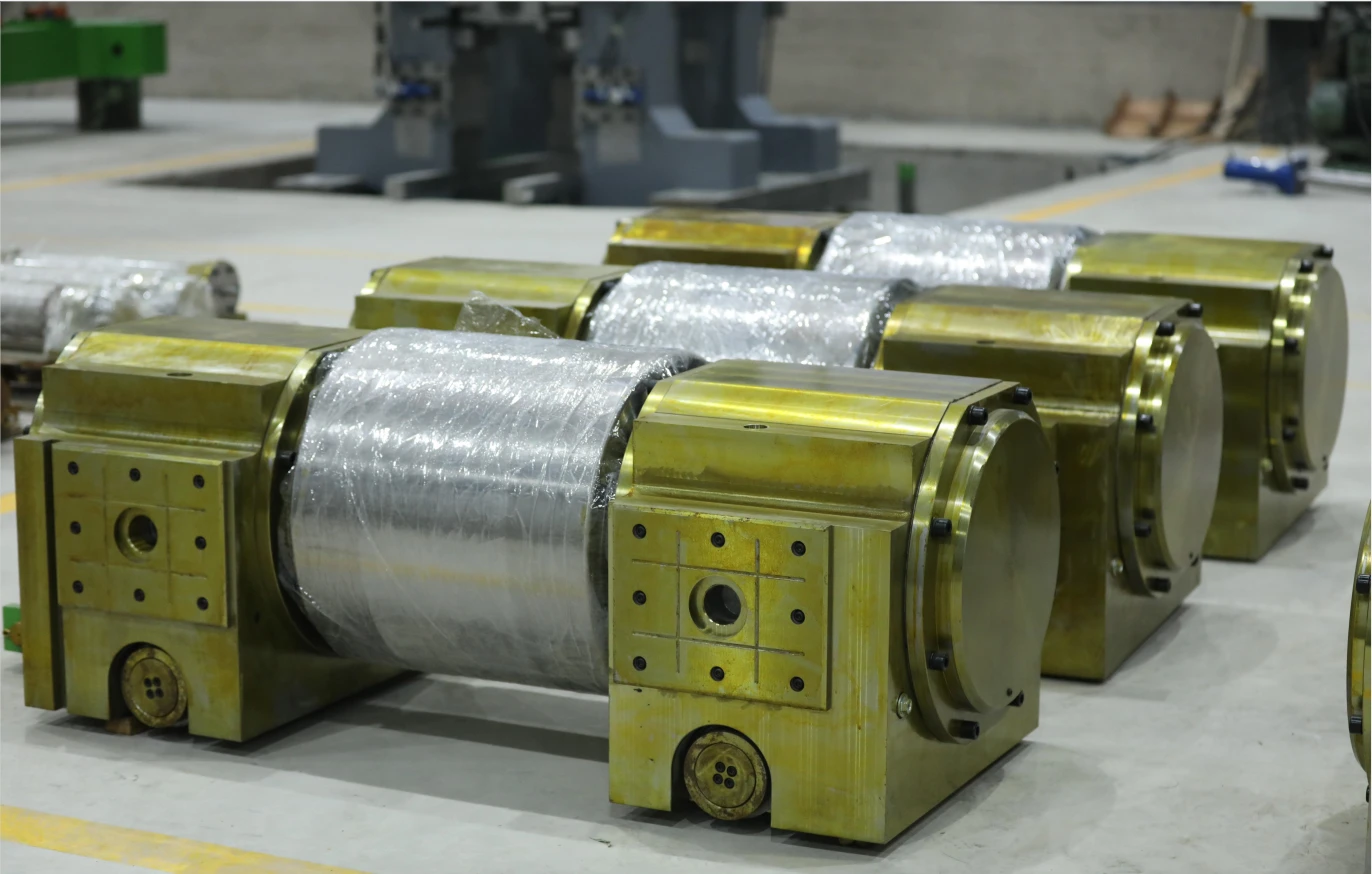
Technical Advantages and Our Expertise in Revamping Service and Spare Parts
Our commitment to excellence in industrial cooling solutions is embodied in our specialized "Revamping service and Spare Parts" offering. This service focuses on optimizing existing water cooling system for water tank installations and providing high-quality components to ensure their long-term, efficient operation. With over two decades of experience in the industrial equipment sector, we possess unparalleled expertise in addressing the complex challenges of thermal management.
Core Technical Advantages of Our Offerings:
- Superior Material Selection: We understand that the longevity and performance of a water cooling system for water tank hinge on the materials used. We utilize a range of high-grade materials tailored to specific operational environments:
- Carbon Steel (ASTM A516 Gr. 70, ASTM A106 Gr. B): Cost-effective for non-corrosive or treated water applications, offering good structural integrity.
- Stainless Steel (SS304, SS316L, SS321): Essential for applications requiring high corrosion resistance, especially with aggressive water chemistries or in food/pharmaceutical industries. SS316L offers superior resistance to pitting and crevice corrosion.
- Duplex Stainless Steel (UNS S31803, UNS S32205): Provides an excellent combination of strength and corrosion resistance, surpassing conventional stainless steels, ideal for highly corrosive or high-pressure environments.
- Copper-Nickel Alloys (CuNi 90/10, CuNi 70/30): Excellent for marine applications or where biofouling resistance and high thermal conductivity are paramount, commonly used in heat exchanger tubes.
- Alloy Steels (e.g., Chrome-Moly steels): For high-temperature, high-pressure applications where creep resistance is critical.
- Advanced Manufacturing Processes: Our spare parts and system components are produced using state-of-the-art manufacturing techniques, ensuring precision, durability, and compliance with stringent industry standards:
- Casting: Used for complex geometries, such as pump housings, valve bodies, and certain heat exchanger components. We employ various casting methods (sand casting, investment casting) to achieve desired mechanical properties and surface finishes.
- Forging: For components requiring high strength and toughness, such as flanges, valve stems, and critical pipe fittings. Forging enhances the material's grain structure, providing superior resistance to fatigue and impact.
- CNC Machining: Precision machining ensures exact dimensions, tight tolerances, and superior surface finishes for critical parts like impellers, shafts, and sealing surfaces, optimizing performance and reducing wear.
- Welding (ASME BPV Code Section IX): All welding procedures are qualified and performed by certified welders, ensuring robust, leak-proof joints critical for pressure-containing components. Techniques include TIG, MIG, and SAW, selected based on material and application.
- Fabrication: For assembling larger components like tanks, vessels, and piping spools, adhering to detailed engineering drawings and quality control procedures.
- Rigorous Quality Control and Inspection Standards: We adhere to international and industry-specific standards to guarantee the quality and reliability of every component and service. Our inspection protocols include:
- ISO 9001:2015 Certification: Demonstrates our commitment to a robust quality management system across all operations.
- API Standards (e.g., API 610 for Pumps, API 660 for Heat Exchangers): Applicable for components used in oil and gas and petrochemical industries, ensuring performance and reliability.
- ASME Standards (e.g., ASME Boiler and Pressure Vessel Code, ASME B16.5 for Pipe Flanges): Ensures the safety and integrity of pressure-retaining components.
- ANSI Standards: For dimensions, tolerances, and testing procedures of various components.
- Non-Destructive Testing (NDT): Including Ultrasonic Testing (UT), Radiographic Testing (RT), Magnetic Particle Testing (MPT), and Liquid Penetrant Testing (LPT) to detect internal and surface flaws without damaging the material.
- Hydrostatic Testing: To verify the pressure integrity and leak-tightness of tanks, vessels, and piping systems.
- Dimensional Inspection: Using precision instruments to verify compliance with engineering drawings.
- Extended Service Life and Durability: Through careful material selection, advanced manufacturing, and stringent quality control, our components and revamped systems are designed for an extended service life, often exceeding 20-30 years with proper maintenance, significantly outperforming standard industry offerings.
- Optimized Performance in Harsh Environments: Our solutions excel in challenging industrial environments, such as those found in petrochemical (high temperatures, corrosive media), metallurgy (abrasive particles, extreme heat), and power generation (high pressures, large volumes). Our components are specifically engineered to provide energy-efficient operation and superior corrosion resistance, directly contributing to lower operational costs and enhanced system reliability.
Manufacturer Comparison and Our Unique Value Proposition
In a competitive market, choosing the right partner for your water cooling system for water tank needs is critical. While many manufacturers offer standard cooling solutions, our "Revamping service and Spare Parts" distinctly positions us as a specialist in enhancing and sustaining the performance of existing industrial assets. Instead of a direct "product vs. product" comparison, our value lies in our holistic approach to system optimization and longevity.
What to Look for in a Cooling System Provider:
- Technical Expertise: Does the provider deeply understand thermal dynamics, fluid mechanics, and material science specific to your industry?
- Customization Capabilities: Can they design or adapt solutions to your unique process requirements, space constraints, and environmental conditions?
- Quality Assurance: Do they adhere to international standards and rigorous testing protocols?
- After-Sales Support & Service: Do they offer comprehensive maintenance, spare parts, and troubleshooting support?
- Industry Experience: How many years have they served your specific industry, and what is their track record?
- Innovation: Are they investing in new technologies like IIoT, energy efficiency, and sustainable practices?
Our Unique Value Proposition:
We differentiate ourselves not merely as a supplier, but as a long-term strategic partner for industrial efficiency and reliability. Our focus on "Revamping service and Spare Parts" highlights this distinction:
- Lifecycle Management Expertise: We don't just sell parts; we provide solutions that extend the operational life of your entire water cooling system for water tank. Our revamping service assesses your current system, identifies bottlenecks, and implements upgrades that improve efficiency, capacity, and reliability. This is a far more cost-effective approach than complete system replacement in many cases.
- Precision-Engineered Spare Parts: Unlike generic replacements, our spare parts are designed and manufactured to meet or exceed OEM specifications, often incorporating material upgrades or design enhancements based on field experience. This ensures perfect fit, optimal performance, and superior durability. We provide components like specialized impellers for cooling water pumps, high-efficiency heat exchanger tube bundles, and custom-fabricated cooling water expansion tank or cooling water storage tank units tailored to specific volumetric needs and pressure ratings.
- Deep Industry-Specific Knowledge: With over two decades serving diverse heavy industries like petrochemical, metallurgy, and power generation, our engineers possess invaluable insights into the specific challenges and regulatory requirements of these sectors. This allows us to offer truly expert advice and highly effective solutions. For example, understanding the corrosive nature of specific cooling water sources in a steel mill allows us to recommend specific duplex stainless steel components for crucial parts of the water cooling system for water tank.
- Focus on Efficiency and Sustainability: Our revamping solutions often include upgrades to more energy-efficient pumps, fan motors, and control systems, significantly reducing operational expenditure and contributing to your sustainability goals. For example, upgrading an older cooling tower's fill media or nozzle design can dramatically improve its cooling efficiency.
- Reliability and Trustworthiness: Our extensive experience, adherence to global standards (ISO, ASME), and transparent communication build trust. We provide detailed engineering reports, material certifications, and comprehensive testing documentation for all our products and services. Our commitment to client satisfaction is reflected in our consistent track record of successful projects and long-term client relationships.
Custom Solutions and Application Cases
Recognizing that no two industrial operations are identical, our strength lies in our ability to develop bespoke solutions. Whether it's a minor component upgrade or a complete system overhaul, our custom engineering ensures optimal integration and performance.
Approach to Custom Solutions:
- Detailed Needs Assessment: We begin by thoroughly analyzing your existing water cooling system for water tank, process requirements, operational data, and future expansion plans. This includes site visits, data logging, and discussions with your engineering and operations teams.
- Engineering Design & Simulation: Our experienced engineers leverage advanced CAD software and simulation tools (e.g., CFD for fluid dynamics, FEA for structural analysis) to design custom components or system modifications that precisely meet the identified needs. This ensures performance prediction and risk mitigation.
- Material & Process Optimization: Based on the application, we recommend the most suitable materials and manufacturing processes, balancing performance, cost, and longevity. This might involve specifying corrosion-resistant alloys for a specific cooling water expansion tank or heat-treated steels for high-stress pump components.
- Fabrication & Quality Assurance: Custom components are manufactured under strict quality control, including in-process inspections and final testing to ensure compliance with design specifications and industry standards.
- Installation & Commissioning Support: We provide technical supervision or full installation and commissioning services to ensure seamless integration and optimal startup of the revamped system.
- Post-Implementation Support: Ongoing technical support, training, and maintenance contracts ensure the continued efficiency and reliability of your customized water cooling system for water tank.
Illustrative Application Cases:
While specific client names cannot be disclosed due to confidentiality agreements, these composite examples illustrate our capabilities:
Case Study 1: Energy Efficiency Upgrade in a Steel Mill
- Challenge: A large steel mill faced escalating energy costs due to an aging and inefficient water cooling system for water tank supporting its continuous casting operations. The existing pumps were oversized, and the cooling towers were operating below their design efficiency.
- Our Solution: We performed an energy audit and recommended a revamping solution. This involved replacing old, fixed-speed pumps with new, variable frequency drive (VFD) enabled pumps precisely sized to the current heat load. We also upgraded the cooling tower fill media and nozzles, improving evaporative cooling efficiency. For the cooling water storage tank, we added internal baffles to optimize flow distribution and installed a modern level control system.
- Outcome: The mill achieved a 25% reduction in energy consumption for its cooling system, translating to significant annual operational savings. The improved cooling stability also led to fewer production interruptions, enhancing overall throughput and product quality. The project paid for itself within 3 years.
Case Study 2: Corrosion Mitigation in a Chemical Plant
- Challenge: A chemical processing plant experienced frequent failures of heat exchanger tubes and pump impellers within its water cooling system for water tank due to highly corrosive cooling water contaminated with chlorides. Downtime for repairs was impacting production schedules.
- Our Solution: Our engineers analyzed the water chemistry and recommended replacing critical components with materials highly resistant to chloride-induced corrosion. For the heat exchanger bundles, we specified tubes made of Duplex Stainless Steel (UNS S31803). Pump impellers and casings were upgraded to a higher grade of stainless steel (SS316L or even super duplex steel for extreme cases) and treated with specialized coatings. We also designed and fabricated a custom cooling water expansion tank from SS316L, ensuring its longevity in the corrosive environment.
- Outcome: Component lifespan increased by over 300%, drastically reducing unscheduled downtime and maintenance costs. The plant experienced more consistent production and improved safety due to fewer equipment failures.
Case Study 3: Capacity Expansion for a Data Center
- Challenge: A rapidly expanding data center needed to increase its cooling capacity to support new server racks, but faced severe space limitations for installing entirely new cooling units.
- Our Solution: We devised a revamping strategy to maximize the existing infrastructure. This involved upgrading the chillers with higher-efficiency compressors and optimizing their control logic. Crucially, we analyzed the hydraulic system and recommended modifications to the piping network to allow for higher flow rates, and designed an additional, compact cooling water storage tank that seamlessly integrated into the existing footprint without requiring major structural changes. We also provided precision-machined flow control valves to ensure balanced distribution.
- Outcome: The data center successfully increased its cooling capacity by 40% using largely existing infrastructure, avoiding expensive construction and significantly shortening the project timeline. The new system maintained precise temperature control for the critical IT equipment.
Trustworthiness: Our Commitment to You
Building and maintaining trust is at the core of our business philosophy. For over 20 years, we have demonstrated unwavering commitment to quality, reliability, and customer satisfaction. This trustworthiness is reflected in various aspects of our service delivery:
- Industry Certification: We are ISO 9001:2015 certified, affirming our dedication to consistent quality management systems across all stages of design, manufacturing, and service delivery. Our manufacturing processes also comply with relevant ASME and ANSI codes where applicable.
- Proven Track Record: Our long-standing presence in the industry and a portfolio of successful projects across diverse heavy industries speak volumes about our capability and reliability. We have cultivated strong relationships with leading companies in petrochemical, metallurgy, power generation, and more.
- Transparent Communication: From initial consultation to project completion, we maintain open and clear communication, providing detailed proposals, project timelines, progress reports, and documentation.
- Comprehensive Documentation: All our products and services come with complete documentation, including material certificates, test reports (e.g., NDT results, hydrostatic test certificates), operational manuals, and maintenance guidelines.
- Quality Assurance & Testing: Every component and system undergoes rigorous testing protocols. For instance, replacement pump impellers are dynamically balanced to ISO standards, and heat exchanger bundles are hydrostatically tested to relevant ASME codes.
- Experienced Personnel: Our team comprises highly qualified engineers, certified welders, and skilled technicians with extensive experience in industrial cooling systems. Continuous training ensures they are up-to-date with the latest technologies and best practices.
Delivery Schedule and Warranty:
We understand the criticality of project timelines in industrial operations. Our standard delivery schedules for typical spare parts range from 4-8 weeks, depending on complexity and material availability. For custom-engineered solutions or revamping projects, detailed project plans with phased milestones and delivery dates are established and mutually agreed upon, typically ranging from 12-24 weeks. We offer expedited services for urgent requirements.
All our "Revamping service and Spare Parts" are backed by a standard 12-month warranty against defects in materials and workmanship, starting from the date of installation or commissioning. Extended warranty options and comprehensive service contracts are also available, providing peace of mind and ensuring the long-term performance of your water cooling system for water tank.
Customer Support:
Our commitment extends beyond delivery. We offer comprehensive after-sales support, including:
- Technical Support: Access to our engineering team for troubleshooting, operational advice, and performance optimization.
- Spare Parts Availability: A dedicated inventory management system ensures prompt availability of critical spare parts, minimizing downtime.
- On-Site Services: Our field service technicians are available for inspections, preventive maintenance, emergency repairs, and performance tuning.
- Training: We provide operational and maintenance training for your personnel to ensure they can competently manage your cooling systems.
Professional FAQ on water cooling system for water tank
Here are answers to some common professional questions regarding water cooling system for water tank and related components:
1. What is the primary function of a Cooling Water Expansion Tank in a closed-loop system?
A cooling water expansion tank primarily accommodates the volumetric changes of the cooling water as its temperature fluctuates. In a closed-loop system, as water heats up, it expands, increasing pressure. The expansion tank, often containing a bladder or diaphragm, provides a compressible volume to absorb this expansion, maintaining system pressure within safe limits and preventing damage to pipes, heat exchangers, and other components. It also helps in maintaining a constant positive pressure to prevent cavitation in pumps.
2. Why is material selection critical for a water cooling system for water tank, especially in industrial environments?
Material selection is critical because it directly impacts the system's longevity, performance, and total cost of ownership. Industrial environments often involve corrosive cooling water (e.g., high chloride content), extreme temperatures, high pressures, and abrasive particles. Choosing the wrong material can lead to rapid corrosion, erosion, fouling, and structural failure. For instance, using Stainless Steel 316L or Duplex Stainless Steel instead of standard carbon steel in a highly corrosive application significantly extends component life and reduces maintenance frequency for the water cooling system for water tank.
3. What are the key differences between open-loop and closed-loop water cooling systems?
An open-loop system (typically using a cooling tower) exposes the cooling water directly to the atmosphere for heat rejection through evaporation. This offers high cooling efficiency but is susceptible to water loss, contamination, and requires extensive water treatment. A closed-loop system (often using a chiller or a heat exchanger with a separate cooling tower loop) circulates water within a sealed circuit, minimizing water loss and contamination. While it might have higher initial costs, it offers better water quality control, less maintenance, and is ideal for sensitive processes or regions with water scarcity. Both may utilize a cooling water storage tank for buffer volume.
4. How does proper water treatment contribute to the efficiency and lifespan of a water cooling system for water tank?
Proper water treatment is paramount. Untreated water can lead to four major problems: scale formation (reduces heat transfer efficiency), corrosion (damages components), biological growth (fouling, reduces flow), and suspended solids (abrasion, blockages). Effective water treatment (e.g., chemical inhibitors, filtration, blowdown) prevents these issues, maintaining optimal heat transfer, protecting equipment from premature failure, and extending the overall lifespan of the water cooling system for water tank components.
5. What international standards typically govern the design and manufacturing of components for industrial cooling systems?
Several international standards apply. Key ones include: ISO 9001 (Quality Management Systems), ASME Boiler and Pressure Vessel Code (BPVC) for pressure vessels, heat exchangers, and piping; ANSI (American National Standards Institute) for dimensions and tolerances of flanges, valves, and pipes (e.g., ANSI B16.5 for Pipe Flanges and Flanged Fittings); and API (American Petroleum Institute) standards for pumps (e.g., API 610 for Centrifugal Pumps for Petroleum, Petrochemical and Natural Gas Industries) and heat exchangers, especially in the oil and gas sector. Adherence to these standards ensures safety, interoperability, and performance.
6. What is the typical service life of a well-maintained industrial water cooling system for water tank?
A well-designed and properly maintained industrial water cooling system for water tank, incorporating high-quality components and materials, can have a service life of 20 to 30 years, and sometimes even longer for major structural elements like tanks and main piping. Critical rotating equipment like pumps may require more frequent maintenance or replacement of wear parts (e.g., seals, bearings), but their overall design life is often within this range. Adherence to manufacturer's recommended maintenance schedules and proactive revamping services significantly contributes to achieving this extended lifespan.
7. How do smart control systems enhance the performance of a water cooling system for water tank?
Smart control systems, often leveraging PLCs, VFDs, and IIoT connectivity, significantly enhance performance by providing real-time monitoring, adaptive control, and predictive maintenance capabilities. They optimize energy consumption by precisely matching cooling output to the actual heat load, adjust pump speeds and fan operations dynamically, and prevent overcooling or undercooling. Furthermore, they enable remote monitoring, fault detection, and generate performance reports, allowing for proactive interventions, reduced operational costs, and maximized uptime for the water cooling system for water tank.
In conclusion, the sophisticated requirements of modern industry demand robust, efficient, and reliable cooling solutions. Our specialized "Revamping service and Spare Parts" for the water cooling system for water tank, supported by deep technical expertise and a commitment to quality, ensures that industrial operations maintain optimal thermal management, extend equipment life, and achieve sustainable growth. We are dedicated to providing customized, high-performance solutions that address the unique challenges of each client, solidifying our position as a trusted partner in industrial cooling infrastructure.
References:
- Grand View Research. (2023). Industrial Refrigeration & Cooling System Market Size, Share & Trends Analysis Report. Retrieved from: https://www.grandviewresearch.com/industry-analysis/industrial-refrigeration-cooling-system-market (Please note: Access to full report content often requires a subscription.)
- Heat Exchange Institute. (2020). Standards for Closed Feedwater Heaters. Retrieved from: https://heatexchange.org/standards/ (General reference to industry standards)
- ASHRAE Journal. (Periodical). Various articles on HVAC&R and industrial cooling technologies. Retrieved from: https://www.ashrae.org/publications/ashrae-journal (General reference for technical articles in cooling technology)
-
Indian Clients Visit YWLX to Inspect Skin-pass MillNewsJun.22,2025
-
Typical Products from Reversing Cold Rolling ProcessNewsMay.26,2025
-
Surface Finish Improvement through Skin Pass RollingNewsMay.26,2025
-
Integration of AGC Systems in Modern Cold Rolling MillsNewsMay.26,2025
-
Cold Rolling in the Context of High-Strength Steel DemandNewsMay.26,2025
-
AGC in Hot Rolling Mills: Challenges and SolutionsNewsMay.26,2025
-
Why Reversing Cold Rolling Mills Are Ideal for Specialty MetalsNewsMay.13,2025


